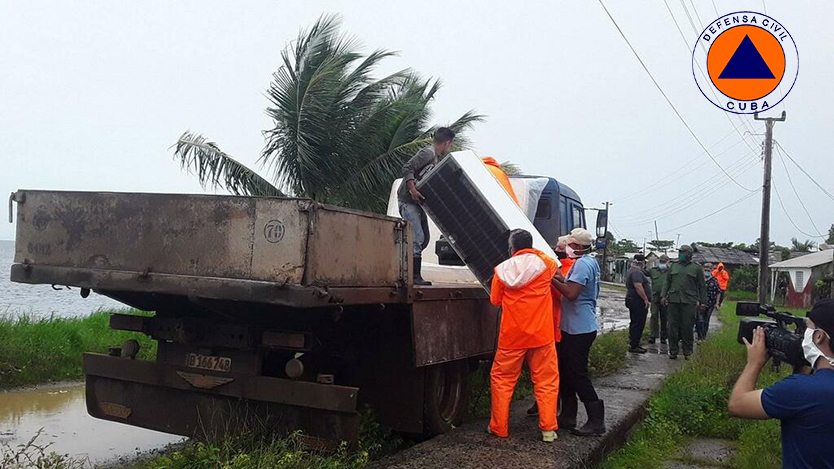
Since its inception, the Civil Defense System in Cuba constitutes a guarantee for the preservation of lives and the conservation of economic and natural resources in situations of natural or technological disasters.
So much so, that just three years after the triumph of the Revolution in 1959, exactly on July 31, 1962, the Popular Defense (DP) emerged, initially from the Military Organization of Industries (OMI).
Those militias were formed by workers to protect the assets of the nascent social project from the attacks and sabotage of the United States administration, which revealed from very early on its undeniable intentions of destroying it until today, when it persists in its economic and political war.
Then, the organization carried out Civil Defense missions and incidentally evidenced its need, because in the stage of the mediated republic there was nothing similar, despite the fact that by presidential decree of December 10, 1941, the National Commission of Defense was established. Civil Defense, although no government was responsible for applying it.
A revealing event promoted the Civil Defense organization in 1963, the same year that Hurricane Flora changed the course of even rivers: the material damage exceeded one billion dollars, caused the death of 1,157 people and there was the largest amount of rain in 24 hours.
The consolidation of its structures corresponded to a gradual process and on July 11, 1966, Law 1194 laid the foundations for the Civil Defense of the Republic of Cuba and its command bodies.
A decade later of experiences in its application, on November 27, 1976, the Council of Ministers approved Law 1316 "On the improvement of the Organizational Structure of Civil Defense", in coincidence with the formation of the local organs of People's Power and the new political-administrative division in the country.
Ten years later, on January 27, 1986, the Civil Defense Scientific Research Center was created, due to the introduction in 1981 of the hemorrhagic dengue fever epidemic that cost the lives of 158 Cubans, including 101 children, due to one of the terrorist actions originating from US territory.
Also in 1986, the Meteoro Exercise began, directed by the National Civil Defense General Staff with the aim of preparing the management bodies and the population for catastrophe situations during the cyclone season from June 1 to November 30.
On February 4, 1991, it undertook a higher projection, when Cuba inserted itself into the International Framework for Action of the decade, by constituting the Cuban National Committee of the Decade, chaired by the Chief of the National General Staff of the DC.
With the purpose of perfecting the defensive doctrine of people's war, on December 21, 1994 Law No. 75 of National Defense establishes the main postulates of the DC, and another legal norm of 1997 its System of Measures.
However, in 2004 a new stage in its development took place, after the effects caused by hurricanes Charley and Iván, when after a detailed analysis of its experiences in 2005 a new Directive summarizes the lessons learned during the last 45 years.
In 2005, the Management Centers for Disaster Risk Reduction (CGRR) were also founded, with the purpose of facilitating and increasing the effectiveness of decision makers in their management, which have been replicated in several Caribbean countries and constitute an example of the South-South cooperation.
From 2007 to 2010, the country faced new disaster situations during the hurricane season, which contributed to the improvement of the system as a whole, mainly for the improvement of the protection of the population and the confrontation with epidemic outbreaks of infectious diseases of digestive and vectorial transmission.
A sobering example was the battle against the COVID-19 pandemic since March 2020 and its emergency plan that included protocols, protein-based immunogenic products and three vaccines and two candidates that closed the door to Sars-CoV-2, cause of the coronavirus.
In addition, collaboration with the United Nations System continued through projects aimed at strengthening local capacities in disaster risk reduction, and even Cuba has been recognized for its ability to prevent and deal with them and for its willingness to provide help to other countries.
The success of its measures and actions are closely linked to the vision of Commander in Chief Fidel Castro Ruz, his direction, control, direct contact with the people and from the mass media.
Despite the insane harassment of the US, in these 60 years the strength of the Cuban Civil Defense System lies in the integration of the forces and resources of society and the State, with the aim of protecting people, their property , social infrastructure, the economy and natural resources, from the dangers of disasters, including war, and the consequences of climate change.




